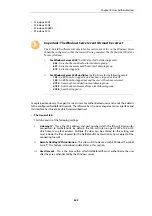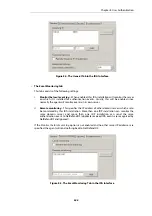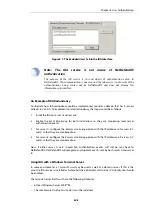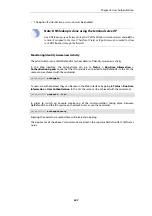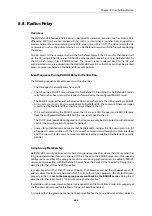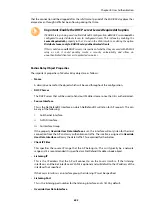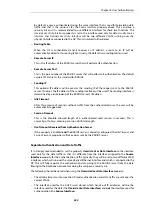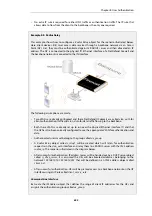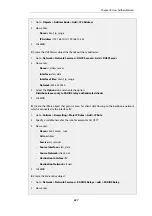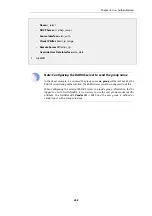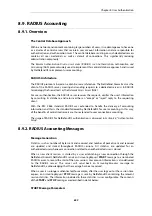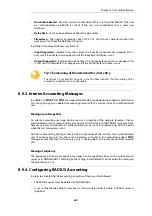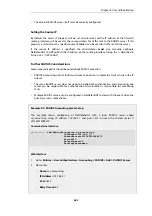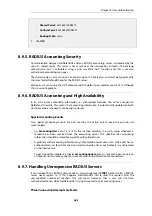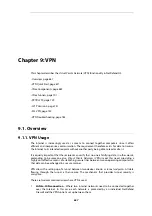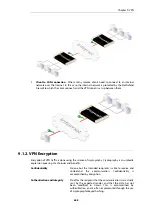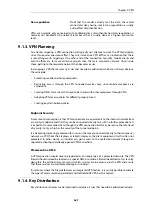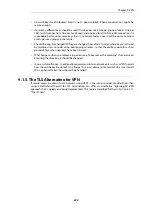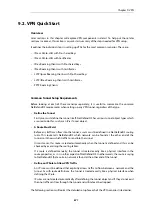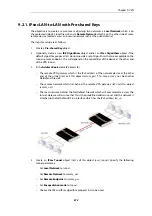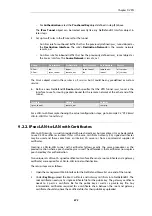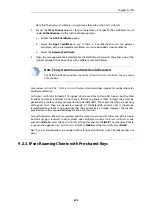
8.9. RADIUS Accounting
8.9.1. Overview
The Central Database Approach
Within a network environment containing large numbers of users, it is advantageous to have one
or a cluster of central servers that maintain user account information and are responsible for
authentication and authorization tasks. The central database residing on such dedicated servers
contains all user credentials as well as details of connections. This significantly reducing
administration complexity.
The
Remote Authentication Dial-in User Service
(RADIUS) is an
Authentication, Authorization and
Accounting
(AAA) protocol widely used to implement this central database approach and is used
by NetDefendOS to implement user accounting.
RADIUS Architecture
The RADIUS protocol is based on a client/server architecture. The NetDefend Firewall acts as the
client of the RADIUS server, creating and sending requests to a dedicated server(s). In RADIUS
terminology the firewall acts as the
Network Access Server
(NAS).
For user authentication, the RADIUS server receives the requests, verifies the user's information
by consulting its database, and returns either an "accept" or "reject" reply to the requesting
client.
With the RFC 2866 standard, RADIUS was extended to handle the delivery of accounting
information and this is the standard followed by NetDefendOS for user accounting. In this way,
all the benefits of centralized servers are thus extended to user connection accounting.
The usage of RADIUS for NetDefendOS authentication is discussed in
.
8.9.2. RADIUS Accounting Messages
Message Generation
Statistics, such as number of bytes sent and received, and number of packets sent and received
are updated and stored throughout RADIUS sessions. All statistics are updated for an
authenticated user whenever a connection related to an authenticated user is closed.
When a new client session is started by a user establishing a new connection through the
NetDefend Firewall, NetDefendOS sends an
AccountingRequest
START message to a nominated
RADIUS server, to record the start of the new session. User account information is also delivered
to the RADIUS server. The server will send back an
AccountingResponse
message to
NetDefendOS, acknowledging that the message has been received.
When a user is no longer authenticated, for example, after the user logs out or the session time
expires, an
AccountingRequest
STOP message is sent by NetDefendOS containing the relevant
session statistics. The information included in these statistics is user configurable. The contents
of the START and STOP messages are described in detail below:
START Message Parameters
Chapter 8: User Authentication
659
Summary of Contents for NetDefendOS
Page 30: ...Figure 1 3 Packet Flow Schematic Part III Chapter 1 NetDefendOS Overview 30 ...
Page 32: ...Chapter 1 NetDefendOS Overview 32 ...
Page 144: ...Chapter 2 Management and Maintenance 144 ...
Page 284: ...Chapter 3 Fundamentals 284 ...
Page 392: ...Chapter 4 Routing 392 ...
Page 419: ... Host 2001 DB8 1 MAC 00 90 12 13 14 15 5 Click OK Chapter 5 DHCP Services 419 ...
Page 420: ...Chapter 5 DHCP Services 420 ...
Page 573: ...Chapter 6 Security Mechanisms 573 ...
Page 607: ...Chapter 7 Address Translation 607 ...
Page 666: ...Chapter 8 User Authentication 666 ...
Page 775: ...Chapter 9 VPN 775 ...
Page 819: ...Chapter 10 Traffic Management 819 ...
Page 842: ...Chapter 11 High Availability 842 ...
Page 866: ...Default Enabled Chapter 13 Advanced Settings 866 ...
Page 879: ...Chapter 13 Advanced Settings 879 ...

